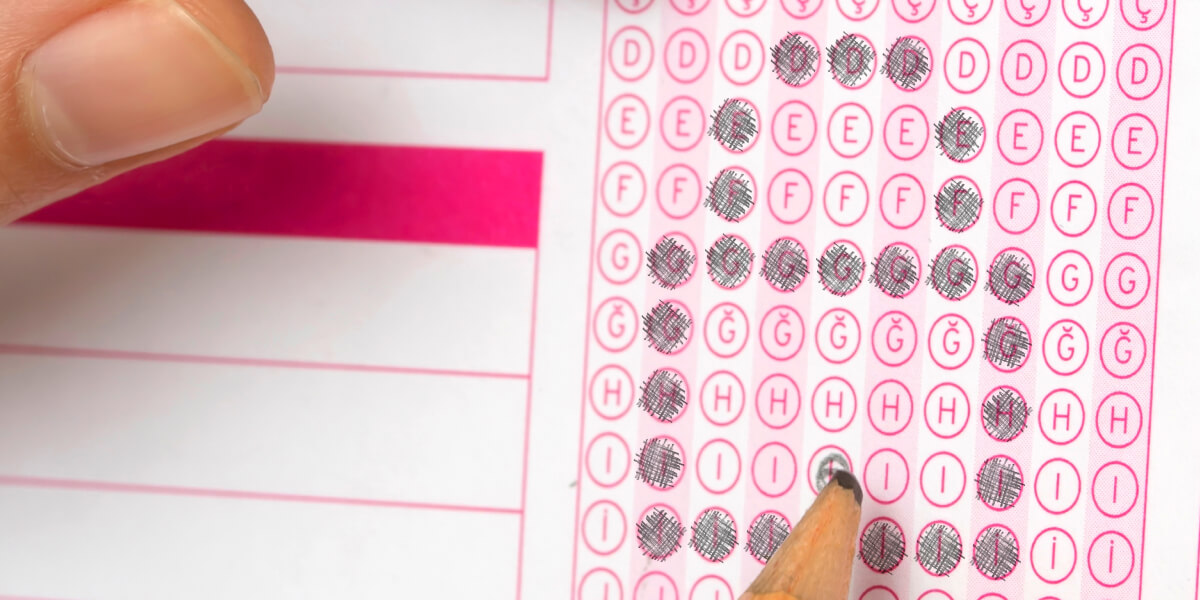Technology isn’t the cause of cheating in the classroom. But it’s made cheating a whole lot easier.
Long before the existence of computers, students found ways to cheat, whether glancing at another student’s paper or scribbling notes on the palm of their hand. Nowadays, there are high-tech ways to cheat, like swiping a smartwatch or buying a ‘bespoke’ paper from an essay mill. But students still resort to low-tech methods, like jotting down a cheat sheet on the inside of a water bottle label.
Even if you ban phones, watches and water bottles during an exam, students will inevitably find new, innovative ways to cheat the system. And there are plenty of websites and discussion threads devoted entirely to this topic.
So how can you minimize cheating in the classroom, particularly if you don’t want to ban the technology you rely upon to engage students and improve interaction in class? Here are a few options, from old-fashioned analog to technological methods.
1. Incorporate open-book testing
If students can use their textbooks (physical or digital) and other online resources during an exam, they may be less likely to consider cheating in the first place. “An open-book test, with challenging application questions that relate directly to the course material, can help minimize the problem,” says an article1 in Faculty Focus. For example, rather than asking students a question they could easily Google, you could ask them to “analyze the author’s argument on page 34, or interpret the results shown in a diagram.”
2. Use multiple versions of an exam
Aside from updating your exams each year, you can also prepare more than one version of an exam using the same questions in a different order (just make sure students aren’t seated next to others with the same version). This may sound like a lot of extra work, but many learning management systems come with scrambling software to automate this process. Tell students ahead of time that you’ll be handing out different versions of the test to discourage cheating from the outset.
3. Test students more, not less
It may sound like an oxymoron, but more frequent testing could help to reduce cheating. “Instead of subjecting students to a pair of menacing tests each semester—midterms and finals —research has shown that instructors can seriously reduce test-taking anxiety by administering low-stakes quizzes, distributed frequently throughout the term,” writes Robert Ubell in an article2 for Inside Higher Ed. Frequent testing could reduce the temptation to cheat, since there’s less at stake for students. Using Top Hat allows professors to regularly administer assessments, quizzes and exams—and the results are all kept in one spot, letting professors see the trends of their students’ performance and reach out to anyone who’s struggling.
4. Use technological tools
Just as some students turn to technology to help them cheat, some instructors are using technological tools to track down cheaters. Turnitin, for example, is one of several plagiarism detection tools that “highlights similarities to the world’s largest collection of internet, academic and student paper content,” according to its website. Earlier this year, the company also came out with Authorship Investigate. The software creates a digital fingerprint of a student’s writing style to “investigate potential cases of contract cheating,” which addresses the evolution of plagiarized work to bespoke essays. Some tools, like Protortrack, are used for online assessments to verify a student’s identity and identify dishonest behaviors.
5. Create digital tests with Top Hat Test
Top Hat Test tackles the issue of cheating head-on by allowing professors to create digital tests that students can take on their own devices—no need to collect students’ smartphones, tablets or laptops before an exam. Students can only access the exam by inputting a unique code auto-generated in class, and algorithms can identify potentially dishonest behavior (such as leaving the app to open another browser) and automatically lock them out of the exam. This helps to reduce the risk of cheating and ensure academic integrity without any extra work required on the part of instructors.
6. Address cheating from the outset
This old-school method doesn’t require any technological tools, yet it can be surprisingly effective. From the outset, define what cheating means in your classroom; for example, explaining how to properly cite a paper could help students understand the difference between sourcing material and plagiarizing it. Establish a policy around cheating and explain the consequences if they’re caught, such as a reduced or failing grade. You may even want students to sign off on a ‘dishonesty’ policy or an honor code, which is a gentle reminder that cheating has consequences.
Cheating isn’t new, and it isn’t going away. But addressing the issue head-on by talking to students, explaining the consequences and using innovative technological tools can go a long way in helping to curb cheating in your classroom.
References
- Farrell, M. and Maheu, S. (2019, April 5). Why Open-book Tests Deserve a Place in Your Courses. Retrieved from https://www.facultyfocus.com/articles/educational-assessment/why-open-book-tests-deserve-a-place-in-your-courses/
- Ubel, R. (2017, February 6). Online Cheating. Retrieved from https://www.insidehighered.com/digital-learning/views/2017/02/06/robert-ubell-online-cheating-and-what-colleges-can-do-about-it


